Why Is Amazon So Slow to Ship? 8 Powerful Factors
Amazon has long been celebrated for its swift delivery times, offering Prime members the luxury of next-day or even same-day delivery. However, in recent years, many customers have started to wonder: why is Amazon so slow to ship? From unexpected delays to extended estimated delivery times, Amazon’s shipping process has left some users dissatisfied. This article explores the reasons behind these delays, from logistical challenges to changing market dynamics, while providing insights into how you can manage and potentially avoid such issues.

Table of Contents
- 8 Factors that Shows Why Amazon So Slow to Ship
- 1. Supply Chain Disruptions
- 2. Amazon’s Focus on Prime Member Benefits
- 3. Overloaded Fulfillment Centers
- 4. Changes in Amazon’s Logistics Model
- 5. Weather and Unpredictable External Factors
- 6. Customized Orders and Third-Party Sellers
- 7. Amazon’s Push for Sustainability
- 8. Address Errors or Incomplete Information
- How to Avoid Delays with Amazon Shipping
- How Amazon Is Addressing Slow Shipping Issues
- What Amazon Customers Can Expect Moving Forward
- Customer Strategies for Managing Amazon Shipping Delays
- Why Is Amazon Prime Shipping So Slow in 2024?
- Why Is Amazon Prime Not Two Days Anymore?
- Amazon Digital Credit and Slow Shipping
- What Is Amazon Digital Credit?
- Why Is Shipping Taking So Long in 2024?
- Why Is Amazon Down?
- Amazon Shipping Delays in 2024
- Amazon Slow Shipping Credit
- What Should You Do About Delayed Orders?
- Final Thoughts on Amazon’s Shipping Delays
- FAQs About Amazon’s Shipping Delays
- Why does Amazon show long delivery estimates even for Prime members?
- Are shipping delays worse during the holidays?
- How can I report an issue with a delayed shipment?
- Why do third-party seller items take longer to arrive?
- Will Amazon’s drone delivery program help reduce delays?
8 Factors that Shows Why Amazon So Slow to Ship
Understanding why Amazon is so slow to ship requires a look into the complexities of its supply chain, external influences, and evolving business strategies. Let’s explore some of the key factors:

1. Supply Chain Disruptions
One of the most significant reasons why Amazon is so slow to ship lies in global supply chain disruptions. Events like the COVID-19 pandemic, geopolitical tensions, and natural disasters have had widespread impacts on supply chains.
- Increased Demand: With more people shopping online, warehouses and logistics networks often face capacity limits.
- Product Shortages: Items sourced internationally may face delays due to port congestion, transportation bottlenecks, or manufacturing slowdowns.
- Labor Shortages: Both warehouse workers and delivery drivers are in high demand, further straining Amazon’s ability to fulfill orders promptly.
2. Amazon’s Focus on Prime Member Benefits
Amazon prioritizes its Prime members for fast shipping. While this ensures faster delivery for those who pay for the subscription, it can lead to slower shipping times for non-Prime members.
- Non-Prime Delays: Standard shipping for non-Prime customers often takes longer as Amazon prioritizes resources for Prime deliveries.
- Regional Variation: Prime benefits, including next-day delivery, are not always available in less populated or remote areas.
3. Overloaded Fulfillment Centers
Fulfillment centers are the backbone of Amazon’s shipping operations. However, high order volumes can lead to delays.
- Seasonal Peaks: During peak seasons like Black Friday, Cyber Monday, or the holiday season, warehouses are overwhelmed with orders.
- Backlog Management: Delays in processing orders at fulfillment centers can cascade into longer delivery times.
4. Changes in Amazon’s Logistics Model
Amazon has increasingly taken control of its logistics network, but this transition has its challenges.
- In-House Delivery Services: Amazon now relies heavily on its delivery network, Amazon Logistics, which is still scaling to meet demand.
- Reduced Dependence on Third Parties: Moving away from traditional carriers like UPS and FedEx has given Amazon more control but also more responsibility, which can lead to delays during high-demand periods.
5. Weather and Unpredictable External Factors
Another reason why Amazon is so slow to ship is its vulnerability to external factors such as weather conditions.
- Extreme Weather Events: Snowstorms, hurricanes, or heavy rains can disrupt delivery routes and warehouse operations.
- Unforeseen Disruptions: Events like road closures, strikes, or local emergencies can also delay shipments.
6. Customized Orders and Third-Party Sellers
Not all items sold on Amazon are shipped directly from its warehouses.
- Third-Party Sellers: Products shipped by independent sellers may have longer handling times.
- Customized Items: Personalized or made-to-order items often require additional processing time.
7. Amazon’s Push for Sustainability
Amazon’s commitment to sustainability is another factor influencing shipping speeds.
- Efficient Delivery Routes: To reduce its carbon footprint, Amazon often consolidates orders, which can lead to longer wait times.
- Eco-Friendly Packaging: Implementing sustainable practices, such as packaging adjustments, can delay shipping for certain items.
8. Address Errors or Incomplete Information
Delays may also occur due to errors in customer-provided information.
- Incorrect Addresses: An incorrect or incomplete shipping address can lead to packages being rerouted or delayed.
- Verification Issues: Certain high-value items may require additional verification, causing shipment delays.
Also Read: How to Calculate Occupancy of a Charter Business? 3 Powerful Steps to Calculate
How to Avoid Delays with Amazon Shipping
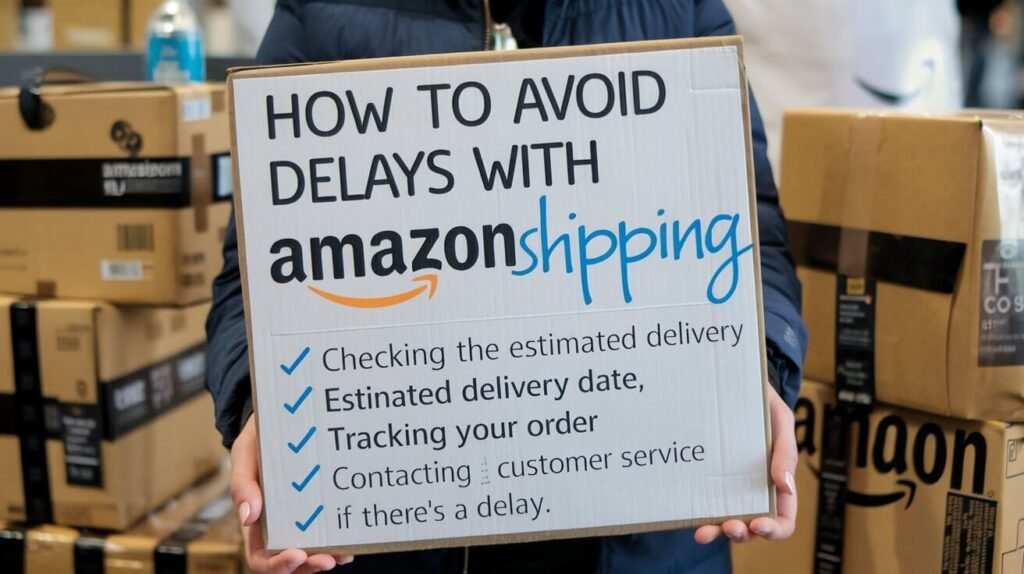
Although some delays are beyond your control, there are steps you can take to ensure faster delivery.
1. Opt for Amazon Prim
Subscribing to Amazon Prime provides significant shipping benefits.
- Faster Delivery Options: Access to same-day or next-day delivery in eligible areas.
- Exclusive Deals: Priority access to deals and faster shipping during peak seasons.
2. Check Seller Ratings and Shipping Policies
When buying from third-party sellers, verify their shipping policies and ratings.
- Look for ‘Fulfilled by Amazon’ Listings: These items are stored and shipped from Amazon warehouses, ensuring faster delivery.
- Avoid Sellers with Poor Reviews: Negative feedback often highlights slow shipping times.
3. Double-Check Your Order Details
Ensure your order details are accurate before placing your order.
- Correct Address: Verify that your shipping address is complete and accurate.
- Choose Faster Shipping: If time-sensitive, consider paying for expedited shipping.
4. Plan Ahead for Peak Seasons
During busy shopping seasons, place your orders early to avoid delays.
- Shop Before Peak Times: Order items ahead of major shopping events.
- Monitor Delivery Estimates: Keep track of estimated delivery times to ensure your package arrives when needed.
5. Use Amazon’s Delivery Hub and Notifications
Amazon provides tools to keep customers informed about their orders.
- Delivery Notifications: Sign up for updates to track your shipment in real-time.
- Amazon Lockers: Use Amazon Hub Lockers for secure and sometimes faster pickup options.
How Amazon Is Addressing Slow Shipping Issues
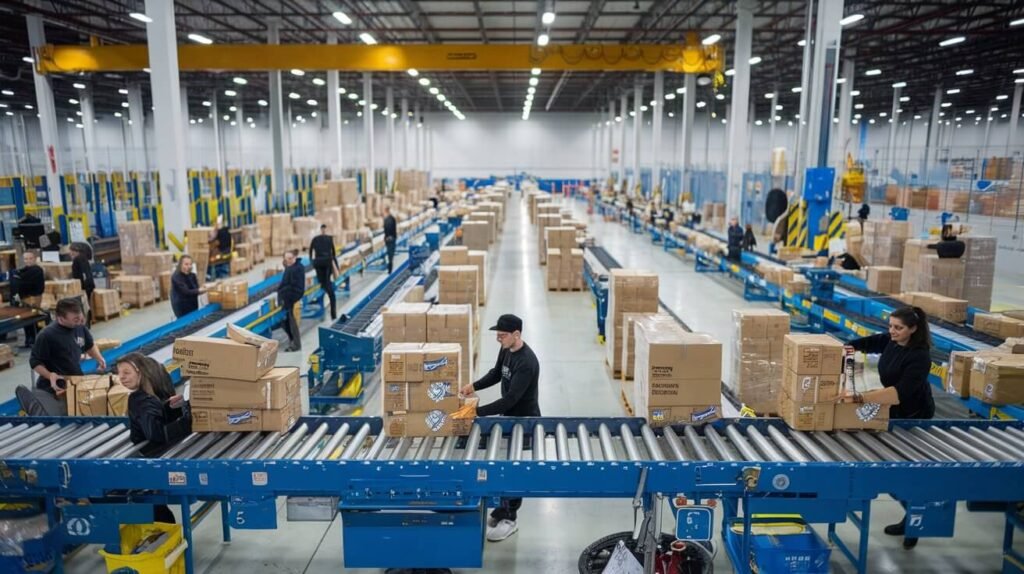
Amazon is aware of its shipping challenges and is actively working to improve delivery times.
1. Expanding Fulfillment Centers
Amazon continues to invest in building new fulfillment centers worldwide, increasing its capacity to handle orders efficiently.
- Closer Warehouses: Strategically located warehouses reduce the distance between products and customers.
- Improved Automation: Robotic systems help streamline warehouse operations.
2. Enhancing Delivery Networks
By scaling its delivery infrastructure, Amazon aims to improve shipping speed.
- Drone Deliveries: Amazon Prime Air is experimenting with drones to reduce delivery times.
- Electric Vehicles: Investing in electric delivery vehicles ensures eco-friendly and efficient deliveries.
3. Strengthening Partnerships
Amazon maintains partnerships with regional and global carriers to ensure broader delivery coverage.
- Third-Party Collaboration: Continuing relationships with UPS, FedEx, and local couriers help fill gaps during peak demand.
- Alternative Delivery Models: Partnerships with stores for in-person pickups or same-day delivery options.
What Amazon Customers Can Expect Moving Forward

As Amazon evolves to address its shipping delays, customers can anticipate several improvements and ongoing challenges. Understanding these factors can help manage expectations while navigating the platform.
1. Increased Regional Warehousing
Amazon is expanding its network of local warehouses and micro-fulfillment centers to bring products closer to consumers. This approach has several potential benefits:
- Reduced Delivery Times: With products stored closer to customers, delivery routes will be shorter, minimizing transit delays.
- Broader Product Availability: More localized warehouses can stock a wider range of items tailored to regional demands, reducing the need to transfer products between distant locations.
However, this strategy requires time to implement and scale. During this expansion phase, customers in less-populated areas may still face slower delivery times.
2. Integration of AI and Predictive Analytics
Amazon is leveraging artificial intelligence (AI) and predictive analytics to improve inventory management and shipping efficiency.
- Demand Forecasting: By predicting demand spikes, Amazon can stock high-demand products in strategic locations, ensuring faster shipping during peak periods.
- Dynamic Routing: AI-powered logistics optimize delivery routes for speed and cost-effectiveness.
As these technologies mature, Amazon’s shipping delays are expected to decrease, offering more reliable delivery timelines.
3. A Focus on Sustainable Shipping
Sustainability remains a priority for Amazon, even if it occasionally causes slower shipping. Initiatives like the “Shipment Zero” program aim to make 50% of all deliveries net-zero carbon by 2030.
While this goal benefits the environment, it may involve temporary trade-offs, such as:
- Consolidated Deliveries: Reducing the number of trips by grouping orders can delay individual shipments.
- Eco-Friendly Materials: Implementing sustainable packaging solutions might extend processing times for some products.
Despite these challenges, Amazon’s focus on sustainability is expected to create long-term benefits, including improved operational efficiency.
4. Enhanced Communication with Customers
One key area Amazon is improving is its communication regarding delays. Clearer notifications and better transparency about shipping times can help set realistic expectations.
- Real-Time Updates: Customers now receive more detailed tracking information, including estimated delivery windows and real-time updates on delays.
- Proactive Compensation: In some cases, Amazon offers refunds or credits for missed delivery guarantees, showing a commitment to customer satisfaction.
By addressing these pain points, Amazon seeks to rebuild trust with users experiencing slower shipping times.
Also Read: How to Sell Used Items on Amazon: Top 9 Powerful Steps
Customer Strategies for Managing Amazon Shipping Delays

If slow shipping has impacted your shopping experience, there are strategies to mitigate frustration and ensure timely deliveries:
1. Use Amazon’s “Need It Sooner?” Feature
When placing an order, look for expedited shipping options like same-day or two-day delivery. While these options often come at an additional cost, they guarantee faster delivery for urgent purchases.
2. Build a “Go-To” List of Reliable Sellers
Identify sellers with consistent shipping records. Prioritize products listed as “Fulfilled by Amazon,” which are handled directly by Amazon’s logistics network for faster processing.
3. Leverage Subscription Services
Amazon’s subscription services, such as “Subscribe & Save,” ensure regular shipments of essential items. These programs often include prioritized shipping and discounts.
4. Set Up Alerts for Delays
Amazon’s notification system lets you track your order every step of the way. Enable SMS or app notifications to stay informed about changes to your shipment’s status.
5. Reach Out to Customer Service
If a delay is significant, Amazon’s customer service team can offer solutions. Common resolutions include:
- Issuing refunds or credits for delayed orders.
- Offering free extensions on Prime memberships for missed delivery guarantees.
Why Is Amazon Prime Shipping So Slow in 2024?

Recent Shipping Complaints
Many customers have reported delays in their orders, with delivery timelines stretching far beyond the promised two days. Social media and forums are buzzing with questions like, “Why is Amazon Prime not two days away?”
What Changed?
The reality is that shipping in 2024 has become more complex due to global issues, operational challenges, and even internal policy shifts within Amazon.
Why Is Amazon Prime Not Two Days Anymore?

Regional Delivery Differences
Amazon has shifted from a universal two-day shipping promise to more localized delivery timelines. This means that customers in urban areas might still receive fast shipping, while rural regions may experience delays due to logistical challenges.
Estimated Delivery Dates
Instead of guaranteeing two-day shipping, Amazon now provides “estimated delivery dates.” This change allows Amazon to manage customer expectations and account for potential delays in the supply chain.
Amazon Digital Credit and Slow Shipping
What Is Amazon Digital Credit?
Amazon digital credit is a form of compensation given to customers when orders are delayed. For instance, you might receive a small credit to use on future digital purchases like Kindle books, apps, or streaming content.
How Does Amazon Use It?
While digital credit softens the blow of delays, some customers see it as a workaround for failing to meet shipping promises. It’s a way for Amazon to acknowledge inconveniences without directly refunding the customer.
Why Is Shipping Taking So Long in 2024?

Complex Logistics
Amazon’s logistics network is massive, but it’s also incredibly complex. Handling millions of packages daily requires precision, and even minor disruptions can create cascading delays.
Technology Glitches
Sometimes, technology issues slow things down. For example, system outages or algorithm miscalculations can lead to misrouted packages or incorrect delivery estimates.
Why Is Amazon Down?
Technical Outages
In 2024, occasional website outages have affected Amazon’s ability to process orders quickly. These outages are typically caused by server issues or maintenance.
Impact on Orders
When Amazon’s website or systems go down, it delays everything—from order processing to shipping updates.
Amazon Shipping Delays in 2024
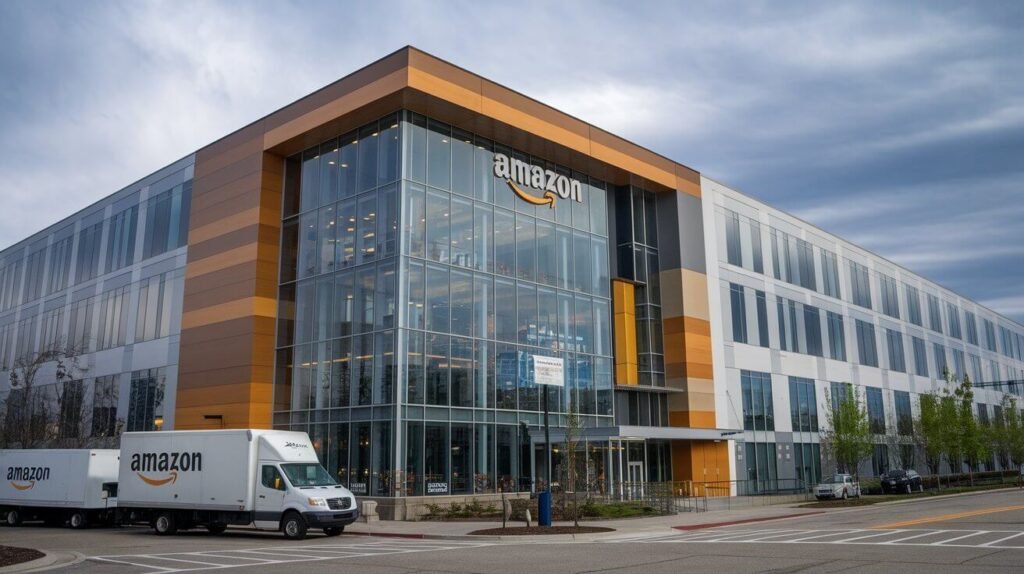
Current Issues
As of 2024, Amazon faces numerous challenges that impact delivery speeds:
- Backlogged warehouses.
- Delays in carrier networks (like USPS, FedEx, and UPS).
- Increased scrutiny on delivery workers’ conditions, which sometimes slows operations.
Amazon’s Solutions
Amazon is actively working to address these problems by:
- Automating warehouse processes.
- Expanding its in-house delivery fleet.
- Partnering with local couriers for last-mile delivery.
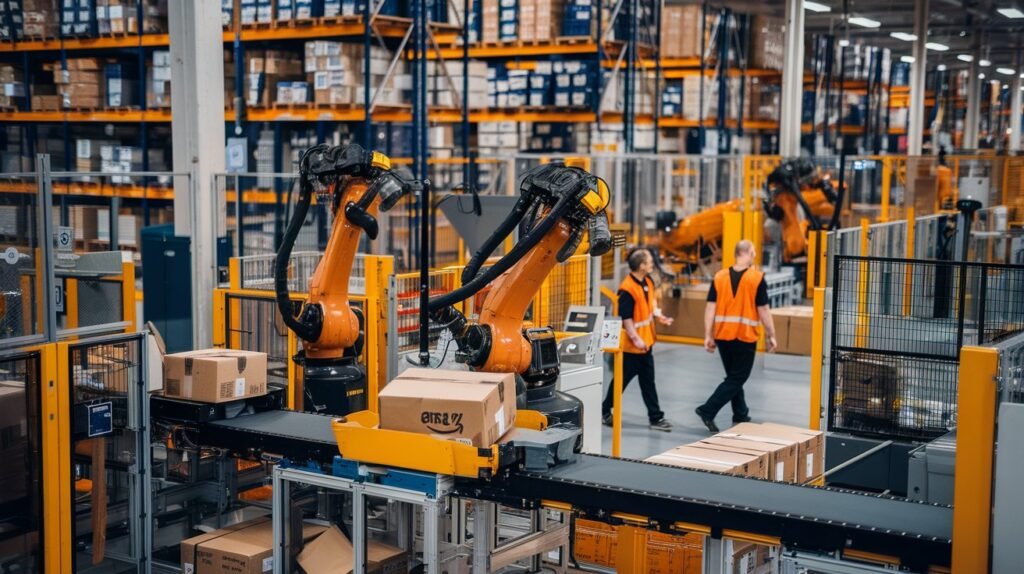
Amazon Slow Shipping Credit
How to Get Credit for Delays
If your package is delayed, you may be eligible for compensation. You can:
- Contact Amazon customer service.
- Request a shipping refund or credit.
- Use any offered digital credits for future purchases.
What Should You Do About Delayed Orders?
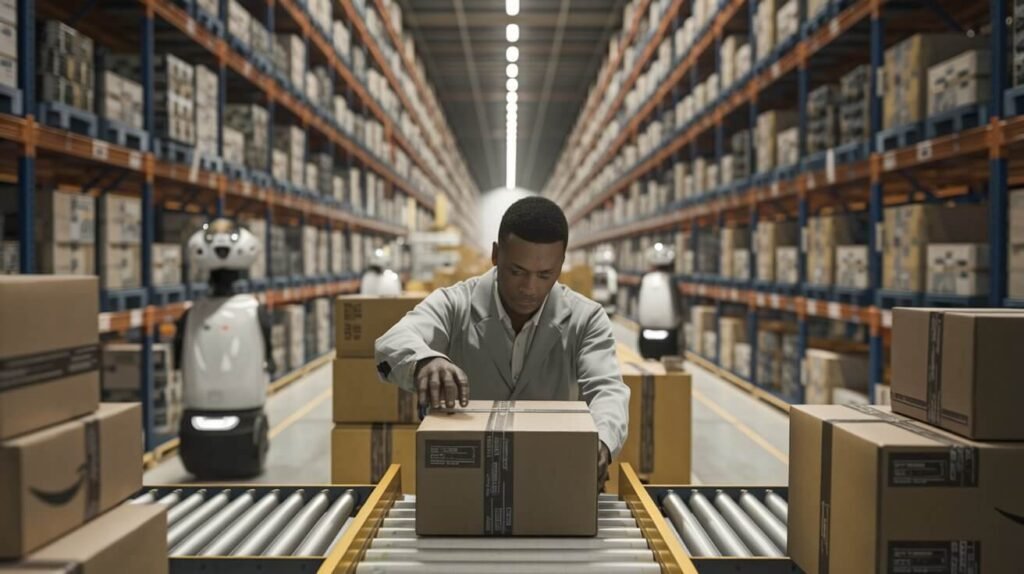
1. Check Your Delivery Status
Use the Amazon app or website to track your order. It will provide real-time updates on your package’s location.
2. Contact Customer Support
If delays persist, reach out to Amazon’s customer service team. They might offer compensation or provide more accurate delivery estimates.
3. Plan Ahead
If you rely on Amazon for essential items, consider ordering earlier than usual to account for potential delays.
Final Thoughts on Amazon’s Shipping Delays
Understanding why Amazon is so slow to ship requires looking beyond the surface and recognizing the challenges of managing one of the world’s largest e-commerce platforms. Factors like supply chain disruptions, seasonal peaks, and sustainability efforts all contribute to slower shipping times.
While these delays can be frustrating, Amazon’s ongoing investments in technology, infrastructure, and sustainability aim to create a more efficient and reliable shipping network. In the meantime, customers can adopt proactive strategies like opting for Prime, shopping early, and using Amazon’s tracking tools to ensure smoother delivery experiences.
As Amazon continues to innovate and address logistical challenges, it’s likely that shipping times will improve, aligning with the company’s commitment to convenience and customer satisfaction. Until then, staying informed and prepared can help you make the most of your Amazon shopping experience.
FAQs About Amazon’s Shipping Delays
Why does Amazon show long delivery estimates even for Prime members?
Amazon’s delivery estimates account for potential delays due to high demand, staffing shortages, or supply chain disruptions. These conservative estimates aim to set realistic expectations.
Are shipping delays worse during the holidays?
Yes, delays often worsen during holiday seasons like Christmas or Black Friday due to a surge in orders. Planning ahead and shopping early can help you avoid disappointment.
How can I report an issue with a delayed shipment?
Amazon’s customer service platform allows you to report delays and seek resolutions. Depending on the situation, you may be eligible for compensation, such as an account credit or extended Prime membership.
Why do third-party seller items take longer to arrive?
Third-party sellers often ship directly from their own facilities, which may lack the efficiency of Amazon’s warehouses. Checking whether an item is “Fulfilled by Amazon” can help ensure faster delivery.
Will Amazon’s drone delivery program help reduce delays?
Amazon Prime Air, the company’s drone delivery initiative, aims to provide ultra-fast delivery for small items. While promising, this technology is still in its early stages and has limited availability.







